An Original Stone Eagle Comes Home to Penn Station in NYC
A 7,500-pound eagle sculpture from the top of the original 1910 Penn Station building has been returned after years in hiding!


We returned to Singapore from Moscow inspired by the architecture of the latter’s metro network, the renowned ‘underground palaces’ initiated during Stalin’s regime in the 1930s. The stations’ eclectic blend of Classical, Baroque and communist quasi-religious iconography captured a major phase of Russian history that arguably continues to define its national psyche till today. What of Singapore? A metro system designed by an arguably equally strong-willed government, started in the 1980s as a core infrastructure for a young nation just two decades after independence, seeking to define itself on the global arena. What does Singapore’s metro, its Mass Rapid Transit (MRT) reveal of itself?
Moscow Metro Interior:

Perhaps not unexpectedly, Singapore’s history can be read through it metro network. The oldest segment of the network is the North-South/East West conduit, shaped like an inverted “T” . These were the 1980s pioneers, built upon principles of pragmatism and functionalism. The stations are generally indistinguishable from each other except for color: Green for Buena Vista, Red for Red Hill etc., and renovations have retained the emphasis on color and simple geometric adornments.
Dhoby Ghaut Orange Emphasis:
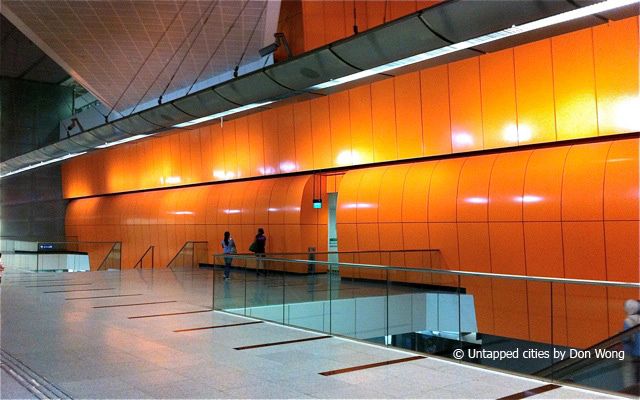
Dhoby Ghaut is etymologically probably one of the most interesting stations in Singapore, derived from the Hindi word ‘Dhobi Ghat’ which refers to a public washing place, usually a river-bank, where Dhobis (washer-women) do their laundry. We recall more than once being asked by Indian visitors why Singapore as a modern city still had a national ‘Dhobi Ghat’! The station is best known for its signature mosaic mural, designed by Romanian-Yugoslavic pair Prvacki and Milenko in 2001 as a tapestry of Singapore’s multicultural history.
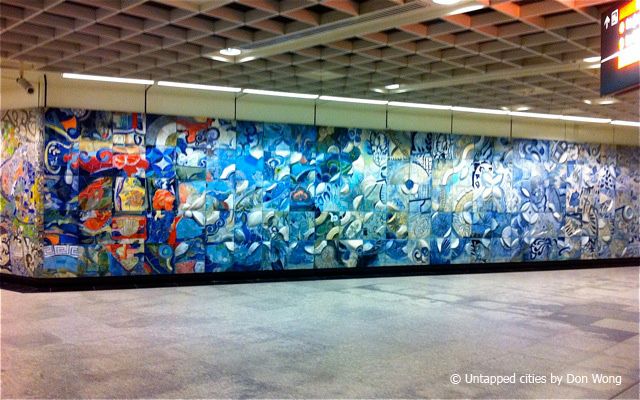
The newer North-East line that runs from Punggol to Harbourfront reflects the growing predominance of steel in construction since the late 1990s, with attempts to infuse elements of art within the stations, such as the Chinese calligraphic characters in granite at the Chinatown station. However, it is in the third and newest segment of the metro network, the Circle Line, that we see a true ‘coming of age’ of Singapore’s metro architecture.


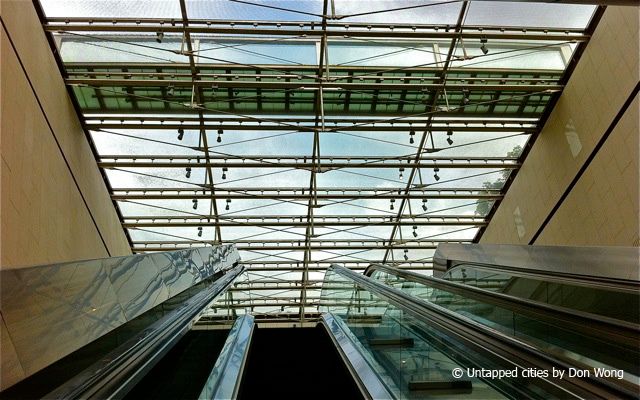
The transparent roof of the Bras Basah station houses a reflecting pool (its water-centric design being an apt historical reference to ‘Bras Basah’, Singapore’s main drying site for wet rice in the 1800s, ‘beras basah’ in Malay). The water-filled skylight allows natural light into the station that links the metro network with the Singapore Art Museum and Singapore Management University.

At 35m, it is the deepest station in the network, and the design by architectural firm WOHA emphasizes its cavernous nature by interplaying dark granite against white sunlight. A passenger literally experiences the passage from ‘dark’ to ‘light’ through a series of dramatic escalators, also the longest in the metro network.
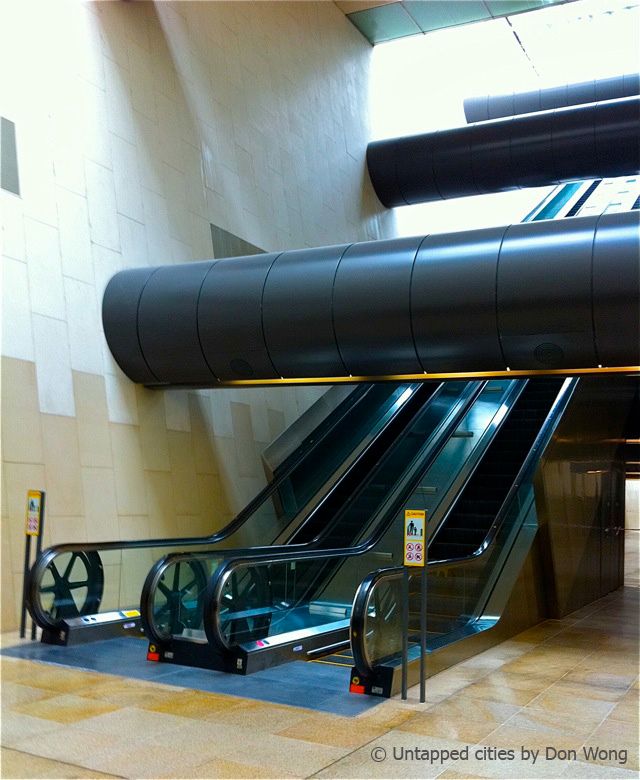
Bras Basah gets top marks for its sensibilities to the historical setting of the station, but we believe that Singapore metro’s Pià ¨ce de résistance is a station that is yet to be officially unveiled. Stadium Station, also designed by WOHA and winner of the President’s Design Award 2010, is less illustrious than Sir Norman Foster’s ‘flying saucer’ concept for the Expo Station. Foster’s is visually captivating, designed to trumpet Expo Station as the site of major public exhibition and commercial fairs. However it has to be appreciated exteriorly, its ‘meaning’ transparent to most passengers.
Norman Foster’s “Flying Saucer” at Expo Station:
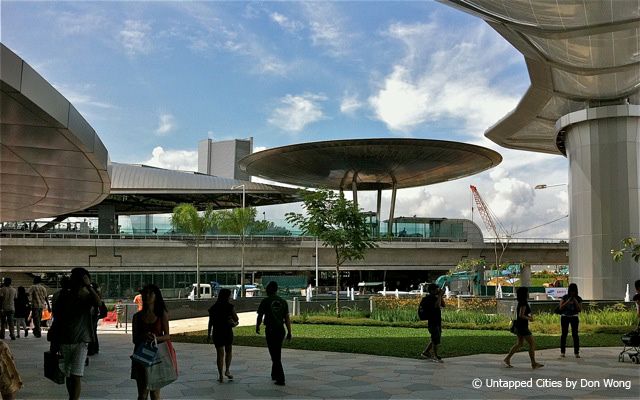
Stadium Station however, sets the tone immediately upon arrival: you know you have come to a ‘destination station’. Unlike all other stations with plain granite or white flooring, Stadium boasts an array of dazzling blue-green tiles. One exits the train to arrive at the bottom of the Mariana Trench, looking up through canyon-like cliffs towards suspended images of soccer players defying gravity.

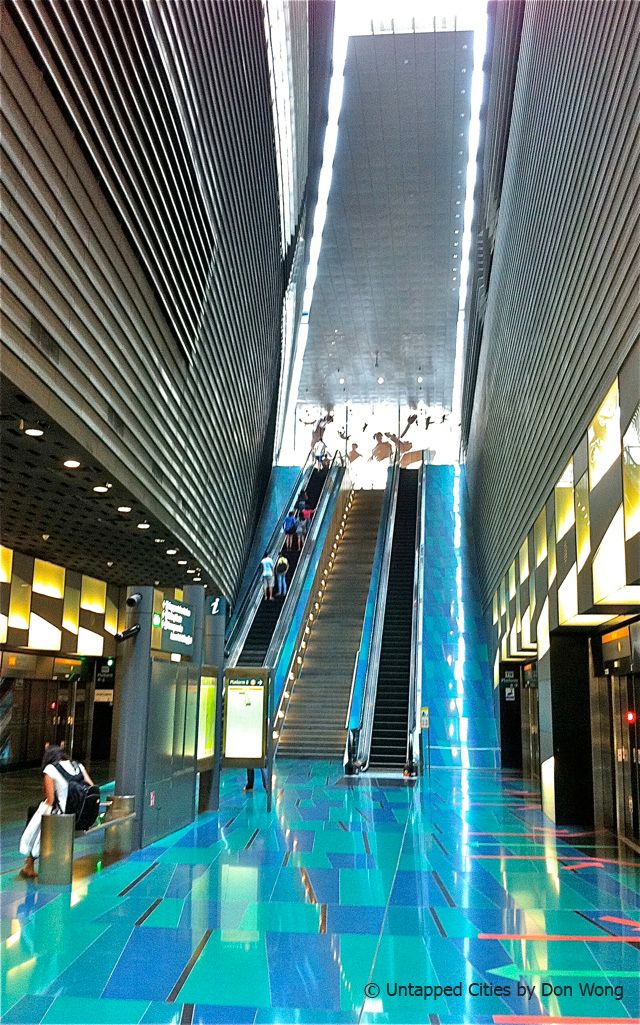
The bold, curvaceous, folding walls seem to follow an organic rift in the earth, and passengers are served the treat of emerging from a channel of commute to a hallowed ground of sports.

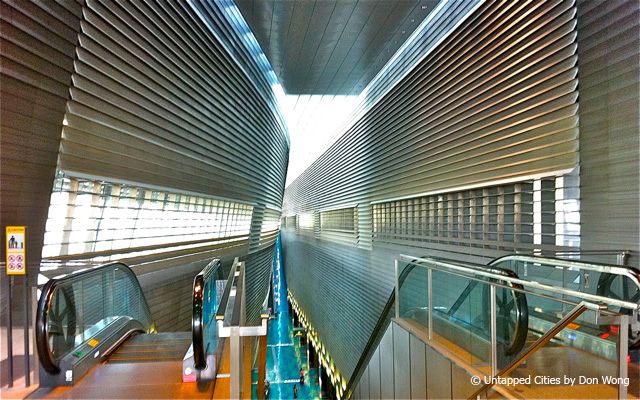
Designed as the gateway to the Singapore Sports Hub, a 35-ha, billion-dollar future-state integrated sports center with a view of the city center, Stadium Station is quietly biding its time for its day in the sun.

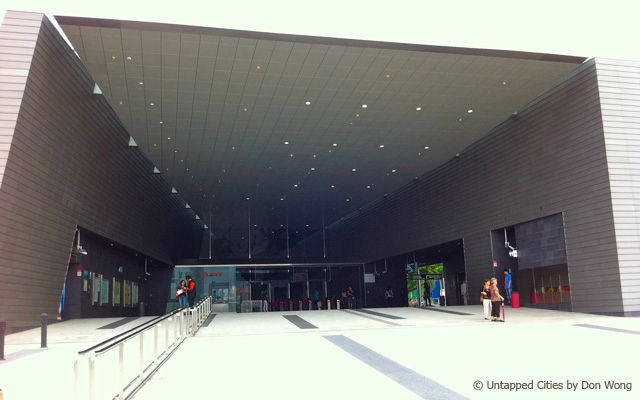
Subscribe to our newsletter